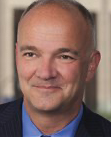

A homeowner who exercised no control over the worksite is not liable for injuries to an independent contractor even though the homeowner had failed to repair an obvious hazard, the California Supreme Court ruled.
In a unanimous decision Thursday, the high court overturned the Court of Appeals, saying it will “decline to adopt a rule that subjects landowners to greater liability than other hirers for injuries stemming from known hazards.”
The high court said it saw no reason to add a third exception to the “Privette doctrine,” a longstanding legal principle in California that presumes property owners have no obligation to protect independent contractors or a contractor’s employees from safety hazards.
The case has been closing watched by professionals in the insurance, contracting and real estate industries because of its potential impact on injury claims. The American Property Casualty Insurance Association, U.S. Chamber of Commerce, California Association of Relators, Association of Southern California Defense Counsel, California Building Industry Association, Associated General Contractors of California, Civil Justice Association and Consumer Attorneys of California filed amicus briefs with the Supreme Court.

“The Court of Appeal decision, had it been affirmed, would have resulted in an unprecedented expansion of tort liability for homeowners, property owners, and hirers, which in turn would have had massive implications for property insurers,” stated Los Angeles attorney Marvin S. Putnam, who represented defendant John R. Mathis in the case.
June Barlow, general counsel for the Realtors association, said her client was concerned by the Court of Appeals decision because real estate agents often refer their clients to contractors for home inspections or repairs. She said the Supreme Court’s ruling “takes a common sense approach.”
“When you hire an expert, you don’t expect to be sued,” she said.

Mathis’ housekeeper hired Luis Gonzalez’s business, Hollywood Hills Window Cleaning Co., to clean the skylight over an indoor pool inside Mathis’ one-story, flat-roofed home. The company advertised that is was a specialist in washing “hard to reach windows and skylights.”
Gonzalez has been cleaning the same skylight since the 1990s, first as an employee of another company and then as owner of his own window-washing business.
On Aug. 1, 2012, Gonzalez was at Mathis’ home while two of his employees cleaned the skylight. Mathis’ housekeeper asked him to tell the workers to use less water because water was leaking into the house.
Gonzalez climbed a ladder to access the roof where his employees were working and passed the message along. In order to climb back down, he had to walk on a 20-inch wide space between the edge of the roof and parapet wall that was built to hide air conditioning equipment.
Gonzalez slipped and fell off the roof, sustaining serious injuries. He had no workers’ compensation insurance.
Gonzalez filed a premises liability claim against Mathis. He alleged that his accident was caused by the dangerous conditions on the roof, including loose pebbles and sand, a lack of tie-off points for a safety harness, a lack of guardrails and the unreasonably narrow path between the parapet wall and the edge of the roof.
Los Angeles County Superior Court Judge Gerald Rosenberg granted summary judgment in favor of Mathis, finding that the precedent set in 1993 by the Privette decision barred his premises liability claim.
A three-judge panel for the 2nd Appellate District reversed. The court said a 2005 California Supreme Court decision, Kinsman v. Unocol, established that a premises owner can be held liable for injuries to an independent contractor “when he or she exposes a contractor (or its employees) to a known hazard that cannot be remedied through reasonable safety precautions.”
The Supreme Court said in its opinion that Kinsman did not go that far. The court said it held that a property owner who is aware of a concealed dangerous condition may be held liable for an injury to a contractor if they fail to disclose the existence of the hazard.
There was no concealed hazard alleged in Gonzalez’s lawsuit, the Supreme Court said. However, the court acknowledged that the facts in the case beg a question: If a contractor cannot correct a known safety hazard on a property, can the owner be held liable if the contractor is injured?
The high court said no.
“A landowner does not fail to delegate responsibility to the contractor for workplace safety simply because there exists a known hazard on the premises that cannot be readily addressed by the contractor,” the court said. “Were we to hold otherwise, we would vastly expand hirer liability and create considerable tension with decades of case law establishing that a hirer is not liable where it is merely aware of a hazardous condition or practice on the worksite.”
Putnam, a partner with the Latham & Watkins law firm, said in an email that California homeowners would have been exposed to “catastrophic liability” had the decision gone the other way.
“As today’s decision affirms, when homeowners hire an independent contractor to perform work, the independent contractor—rather than the homeowner—is responsible for ensuring the safety of the contractor’s employees at the worksite,” he said. “Today’s result affirms what we have said from the outset—while Mr. Gonzalez’s injuries were undeniable tragic, Mr. Mathis in no way contributed to that tragedy.”

Attorney Ellie S. Ruth, who filed an amicus brief on behalf of the Southern California Defense Counsel, said the Court of Appeals ruling’s potential to create more litigation was just as onerous as the expansion of liability.
Ruth, who is with the Greines, Martin, Stein & Richland firm in Los Angeles, said the appellate court decision would require judges hearing injury lawsuits by contractors against property owners to make a decision about whether reasonable safety precautions could have been taken to prevent the injury. She said generally that kind of fact finding requires a trial, so summary judgment would be virtually impossible.
Ruth said the Supreme Court clearly understand that eliminating the summary judgment option for defense attorneys would have exposed insurers to increased litigation costs. The court devoted nearly five pages of its opinion to the issue. While Privette created a presumption that property owners are not liable for contractor injuries, the Court of Appeals ruling practically eliminated that presumption because the presumption would be rebuttable in almost every case, the high court said.
“In the niche that we occupy, it would be a humongous headache,” Ruth said.
About the photo: Hollywood Hills Window Cleaning owner Luis Gonzales is shown in promotional photo posted on the Neighbor2Neighbor website.